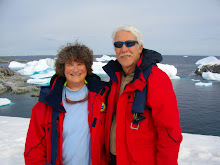Bad data causes bad science
You want to record high temperatures to "prove" the earth is getting warmer? Then place the remote weather stations used for official data collection in places likely to be warmer - on roof tops, next to a building, surrounded by buildings, next to a parking lot, next to an airport's runway pavement. That is what NOAA is allowing, I mean, doing.
Pittsburgh Tribune has the details:
Remember in January when the National Oceanic & Atmospheric Administration (NOAA) and its good friends in media trumpeted that 2006 was the warmest year on record for the contiguous United States?
NOAA based that finding - which allegedly capped a nine-year warming streak "unprecedented in the historical record" - on the daily temperature data that its National Climatic Data Center gathers from about 1,221 mostly rural weather observation stations around the country.
... the stations play an important role in detecting and analyzing regional climate change. More ominously, they provide the official baseline historical temperature data that politically motivated global-warming alarmists like James Hansen of NASA plug into their computer climate models to predict various apocalypses.
NOAA says it uses these 1,221 weather stations -- which like the ones in Uniontown and New Castle are overseen by local National Weather Service offices and usually tended to by volunteers -- because they have been providing reliable temperature data since at least 1900.
But Anthony Watts of Chico, Calif., suspects NOAA temperature readings are not all they're cracked up to be. As the former TV meteorologist explains on his sophisticated, newly hatched Web site surfacestations.org, he has set out to do what big-time armchair-climate modelers like Hansen and no one else has ever done - physically quality-check each weather station to see if it's being operated properly.
To assure accuracy, stations (essentially older thermometers in little four-legged wooden sheds or digital thermometers mounted on poles) should be 100 feet from buildings, not placed on hot concrete, etc. But as photos on Watts' site show, the station in Forest Grove, Ore., stands 10 feet from an air-conditioning exhaust vent. In Roseburg, Ore., it's on a rooftop near an AC unit. In Tahoe, Calif., it's next to a drum where trash is burned.
See Watts' web site: surfacestations.org
He explains the problems with photographs to illustrate.


0 Comments:
Post a Comment
<< Home